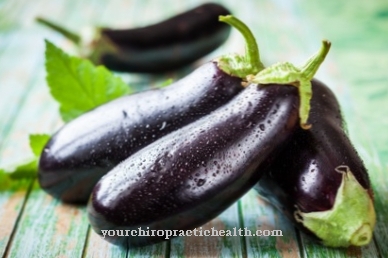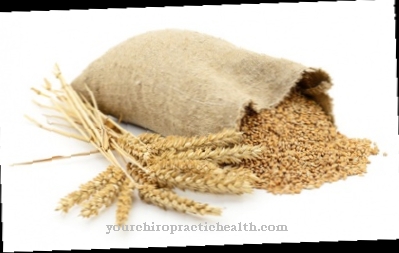sugar sweetens life, but is also considered an extremely unhealthy food that is associated with the development of various diseases. However, the body cannot function entirely without sugar: the brain needs glucose to drive it, and a moderate consumption of sugar is also good for the soul.
What you should know about sugar

The term "sugar" is mostly used for white, refined household sugar. It consists mainly of sucrose, tastes very sweet and comes in the form of white crystals on the market.
But not all sugar is the same - there are different types of sugar, such as raw cane sugar or whole cane sugar. They differ in terms of their ingredients and their color. In addition, sugar is sold in different forms: from candy to powdered sugar, grape sugar and lump sugar to sugar loaf, there are many common forms of trade for sugar. Sugar with added additives such as vanilla sugar or preserving sugar for preserving jam is also available as standard.
While sugar in the tropics is mainly obtained from sugar cane, sugar beet is the most important source of sugar in Central Europe. The most important country in the world for sugar production is by far Brazil. However, about half of the sugar produced there is processed into fuel. In Europe, the main sugar producers are France, Germany and Poland. The industrial production of sugar began as early as 1800. The first sugar find dates from around 8,000 BC. For a long time, sugar was regarded as a special luxury item and was only available to the richer classes of the population. Nowadays the demand for sugar is enormous: Around 270 million tons of sugar beets and around 1.7 billion tons of sugar cane are processed into sugar every year.
After the harvest, the sugar beets are processed into shreds. By adding hot water, the so-called raw juice is created, from which water is removed until a brown thick juice is produced. This is further thickened in the negative pressure. By adding so-called seed crystals, the sugar crystals begin to form. These are separated from the remaining syrup, the molasses, in centrifuges. To produce refined sugar, which is particularly pure and white, the sugar is dissolved again in water and then crystallized again.
But why does sugar taste so good? The desire for sugar is inherent in man. Breast milk is already sweet, which means that the body fixes on the sweet taste at an early stage. In addition, the consumption of sugar triggers the brain's reward system. This makes you feel good after consuming sugar. In addition, sugar usually provides quick relief for tiredness and exhaustion.
Importance to health
Sugar has a very bad reputation for health. It is said to cause tooth decay and to be one of the main triggers for lifestyle diseases such as obesity and diabetes. Sugar is also often blamed for hyperactivity in children. In addition, the term "sugar addiction" is becoming a serious problem for many people.
Sugar is also known to provide so-called "empty" calories. It does not contain any significant minerals and no vitamins. However, as part of a healthy diet, sugar is not necessarily harmful in moderation. The human brain even needs sugar in the form of glucose in order to function. The WHO recommends reducing the consumption of sugar to around 50 grams per day as a guideline for adults. This corresponds to about ten percent of the daily calories.
The actual consumption in Germany is on average twice that amount. Hidden sources of sugar should also be considered. Sugar is not only found in fruit, but also in corn flakes and even in ketchup, which is only revealed by looking at the label. Even the sugar cube in coffee is often forgotten in the balance sheet.
Ingredients & nutritional values
| Nutritional information | Amount per 100 gram |
| Calories 387 | Fat content 0 g |
| cholesterol 0 mg | sodium 1 mg |
| potassium 2 mg | carbohydrates 100 g |
| Fiber 0 g | protein 0 g |
In addition to 0.0076g salt, minerals also contain 0.6mg calcium, 0.3mg iron, and 0.2mg magnesium in 100g white household sugar.
Intolerances & allergies
Sugar is generally well tolerated. From a scientific point of view, there is no general "sugar allergy". However, when you have irritable bowel syndrome, sugar can lead to a variety of problems. These problems include gas, diarrhea or constipation, as well as abdominal cramps, which occur more frequently after eating sugary foods.
In addition, people can develop an intolerance to individual sugar groups such as fructose or lactose. In this context, a "pseudo-allergy" is often used.
Shopping & kitchen tips
Ordinary table sugar is readily available. Supermarkets and discounters sell it at cheap and relatively constant prices. As a rule, sugar is packed in paper and is available in one kilo each.
Raw cane sugar and whole cane sugar are also available in organic stores and well-stocked supermarkets. They are made from sugar cane instead of sugar beets and, unlike sugar, have at least a low level of nutrients.
Sugar should be stored as cool and dry as possible, otherwise it can form lumps. However, these are only disturbing for aesthetic reasons and can usually be converted back into small crystals by simply crushing them. Sugar stays best if it is transferred to an airtight can after purchase. It can even be stored for several years. Moist sugar, on the other hand, can develop an unpleasant odor and even tends to form mold or ferment.
Preparation tips
All sorts of delicious sweet creations can be conjured up from sugar, which flatter the soul and can now and then be enjoyed with a clear conscience. Sugar not only tastes sweet, it can even make the taste of other ingredients appear more intense. Whether puddings, cakes and tarts or desserts - all kinds of magic can be conjured up from sugar. In addition, sugar is often the icing on the cake of homemade, sweet creations: the decorative frosting, the crunchy caramel crust or the powdered sugar on the cake - sugar definitely sweetenes life.
Sugar is also good for preservation purposes. Preserved fruit or homemade jams last significantly longer than fresh fruit. Health-conscious people can also use various sugar alternatives. Many of them, such as honey or stevia, are lower in calories than conventional sugar.























.jpg)



